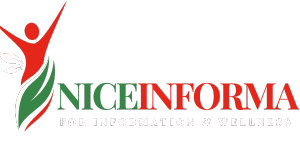Finding the perfect Herbal Lip Balm Recipe can sometimes be an endless (and expensive) quest. But what if the best lip balm could come from a store or your kitchen? With some guidance and simple ingredients, crafting your herbal lip balm is not only easy but also a rewarding choice for your health and the planet.
As the number of environmentally conscious consumers, DIY, and beauty lovers are turning to homemade makeup products. Why? Since they know precisely what is in them, they can create the best formulas and, more importantly, choose their choices that are compatible with environmental goals. Today, we’ll show you how to make your own herbal lip balm from scratch, share creative eco-friendly packaging ideas, and help you understand DIY beauty’s cost and environmental benefits.
Whether you’re a DIY veteran or a first-timer, this guide has you covered. The result? Silky, nourishing lip balms you can feel good about using and sharing.
The Benefits of Herbal Lip Balms
The benefits of using herbal lip balms go far beyond helping dry lips. They’re an ideal alternative to synthetic cosmetics:
Natural Nourishment Herbal Lip Balm Recipe
The herbal lip balms are made with plant-based components that nourish and heal lips with chaps without synthetic ingredients. The range of ingredients includes coconut oil and shea butter every ingredient offers the nutrients and hydration needed to work in synergy with the skin.
Customizable Formulations
Lip balms sold in stores offer the most popular formulas and are usually laden with artificial fragrances and colors. If you make your formula, you can tailor the recipes to your preference, whether focussing on hydration, adding lighter tints, or incorporating herbal extracts for healing.
Sustainable and Safe
Unlike many commercial balms in single-use plastic packaging, your DIY versions can be housed in sustainable packaging. Plus, you can avoid harmful or allergy-inducing chemicals often present in mainstream products.
“The rise of DIY beauty reflects a growing awareness of our environmental impact and the power of simple, effective ingredients.” – SustainableLivingExpert.
Understanding the Ingredients

The secret to creating the top herbal lip balm is to know the ingredient list. Every choice plays a crucial function:
Natural Oils and Fats
These form the base and provide hydration.
- Coconut Oil – Deeply moisturizing and naturally antibacterial.
- Shea Butter or Cocoa Butter – Adds richness and a creamy texture.
- Almond or Jojoba Oil – Lightweight oils perfect for that silky feel.
Natural Waxes
Waxes give your balm its structure.
- Beeswax – A natural humectant known for retaining moisture.
- Carnauba Wax (Vegan Option) – Plant-based, ensures a firm and glossy balm.
Herbal Additives
Infuse herbs for added benefits and natural scents.
- Chamomile – Calms and soothes sensitive skin.
- Rosehip – Packed with antioxidants and vitamin C.
- Lavender or Peppermint – Provides a refreshing herbal aroma.
- Optional Scents and Tints
- Essential oils like lavender, lemon, or vanilla offer scent without synthetic fragrances.
- Add natural color using beetroot powder, cocoa powder, or turmeric.
“Using natural and herbal ingredients in lip balms not only nourishes your lips but also supports sustainable agriculture.” – OrganicBeautyCampaigner.
Step-by-Step Guide to Making Your Herbal Lip Balm Recipe

Here’s how to create your nourishing masterpiece:
Step 1: Sourcing High-Quality Ingredients
Make sure to use organic, ethically sourced, as well as natural products when you can. A lot of health food stores and online stores offer options that are sustainable.
Step 2: Sterilize Your Tools
To prevent contamination:
- Wash all containers, tools, and workspaces with warm water and soap.
- Dry entirely and use rubbing alcohol for extra sterilization.
Step 3: Melting and Mixing
Ingredients:
- 2 tablespoons beeswax (or carnauba wax if vegan-friendly)
- 1 tbsp coconut oil
- 1 tbsp of shea butter
- 3 to 5 drops of the essential oil (optional)
- Natural tint (optional)
Instructions:
output:
Create a double boiler by placing a heat-safe bowl over simmering water.
- Add beeswax, coconut oil, and shea butter; stir occasionally until melted.
- Remove from heat and mix in essential oils or natural tints.
Step 4: Pour into Containers Herbal Lip Balm Recipe
Quickly pour the warm liquid into small tins, tubes, or jars. Allow the balm to cool and harden completely before capping.
“By empowering consumers to craft their products, we reconnect with the natural world and reduce waste.” – GreenBeautyAdvocate.
Eco-Friendly Packaging Options

Why stop at sustainable ingredients when your packaging can also be earth-friendly?
- Metal Tins
Durable, reusable, and widely recyclable.
- Glass Jars
Perfect for preserving freshness and eco-chic aesthetics.
- Biodegradable Tubes
Made from paperboard, these are compostable alternatives to plastic.
“Crafting your herbal lip balm is as much about the environment as it is about beauty.” – EcoBeautyInnovator
Tips for Storing and Using Homemade Lip Balm
- Store in a cool, dry place to prolong shelf life.
- Ensure your hands or applicators are clean when using them to avoid contamination.
- Homemade balms last 6-12 months—watch for any changes in smell or texture as signs they’ve expired.
DIY vs. Store-Bought Lip Balm
Making your own not only reduces costs but also minimizes environmental impact.
- Cost Comparison: On average, a single DIY balm costs $0.50. Popular store-bought options average $3-5 each.
- Environmental Impact: You combat single-use plastic waste directly by opting for reusable packaging.
“DIY beauty empowers you to make personal and sustainable choices for your routine.” – SustainableLivingExpert.
Unlock the Joy of DIY Beauty: Herbal Lip Balm Recipe
Making herbal lip balms isn’t just about skincare; it’s about building a connection to the natural ingredients and choices that shape your routine. Personalization, sustainability, and self-care all combine for an experience far beyond the final product.
We’d love to see your creations! Share your photos and DIY tips on social media using #HerbalLipBalm. Download our free Ultimate Herbal Lip Balm Recipe Card [here]. Sign up for our newsletter for more DIY beauty recipes and eco-friendly lifestyle tips.
FAQs
What ingredients do I need to make herbal lip balm?
You’ll need a few essential ingredients such as beeswax (or a vegan alternative like candelilla wax), natural oils (e.g., coconut or almond oil), shea butter or cocoa butter, and herbal-infused oils or essential oils for fragrance. Our Ultimate Herbal Lip Balm Recipe Card includes a complete list of ingredients and step-by-step instructions.
Are herbal lip balms safe for sensitive skin?
Yes, herbal lip balms are generally safe for sensitive skin, relying on natural, gentle ingredients. However, it’s always a good idea to do a patch test before applying any new product, mainly if it contains essential oils or other actives.
How long will homemade lip balm last?
If stored correctly in a dry, cool area, your homemade lip balms will last for 6 to 12 months, dependent on the ingredient’s condition of freshness. Be sure that your containers are clean and well-sealed to ensure maximum longevity on the shelf.
Can I adjust the recipe to fit my preferences?
Absolutely! One of the best parts of DIY beauty is the ability to customize. You can experiment with different oils, waxes, and fragrances to create a product that’s perfect for you. Always make minor adjustments and test as you go.
Is making my lip balm cost-effective?
Yes, making your lip balm can be cost-effective in the long run, especially if you reuse containers and buy ingredients in bulk. Plus, you gain the peace of mind of knowing exactly what’s in your product.




The article provides some great insights and practical advice. Thanks for sharing your expertise with us.
Your blog entries resemble little doses of sunshine that brighten up my day. Thank you for that!